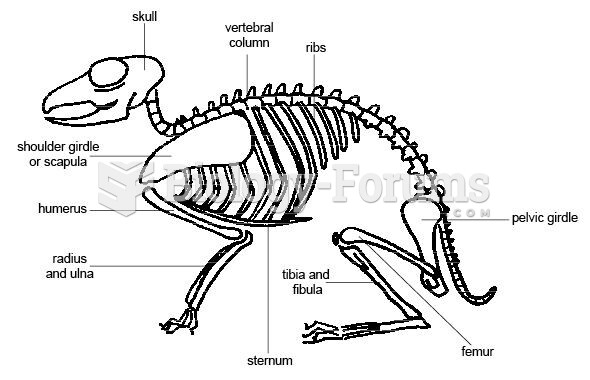Answer to Question 1The correct way to handle a rabbit depends on the size of the rabbit; however, under no circumstances should
the animal be picked up by the ears because this may cause injury to small blood vessels or cartilage in the
ear. Also, picking the animal up by the nape of the neck is not recommended, because this too can cause
damage to tiny blood vessels in the skin and could cause damage to the pelt.
When approaching a rabbit cage, one should walk slowly and speak to the rabbit. If the rabbit knows
someone is close, it won't get as frightened and bolt to the corner of the cage.
Next, one should reach in and gently stroke the animal from front to rear and rub and stroke the animal's
head. Then, the rabbit can be gently moved into a position where it can be picked up by slipping one hand in under the chest and belly and placing the other hand behind the rabbit. The rabbit can now be lifted up and
removed from the cage. It is important to remove it from the cage tail first to prevent the rabbit's legs from
getting caught in the wire floor or wire door of the cage.
Small rabbits can be supported with one hand under the body, and large rabbits can be supported on
one arm with the other arm cradling the animal securely. If the animal feels secure and comfortable, it won't
struggle or try to escape. The head of the rabbit can be tucked in under the upper arm toward the elbow of the
arm that is being used to support the rabbit.
Correct restraint is important because a frightened rabbit can kick hard enough to fracture its own spine.
Small animals are easy to lift with the method described; however, larger animals may pose a problem.
This is especially true if they are not used to being handled. The handler should always wear long-sleeved
clothing to prevent scratches.
When setting the rabbit down, one must do so gently and slowly, letting the animal see where it is going
so that it will not be frightened. The handler should set the rabbit down, hind end first. A rabbit's footpads are
covered with fur, and when placed on slick surfaces, they have no traction. Rabbits can easily dislocate a hip
or their spine when they try to hop or push off on their rear legs.
The handler should be careful when returning the rabbit to its cage. The rabbit, recognizing a familiar
area, may try to jump from the handler's arms and may inflict an injury to the handler with its strong,
powerful rear legs and sharp toenails.
Answer to Question 2Several things are important in housing rabbits: temperature, humidity, ventilation, proper lighting, and
absence of drafts







